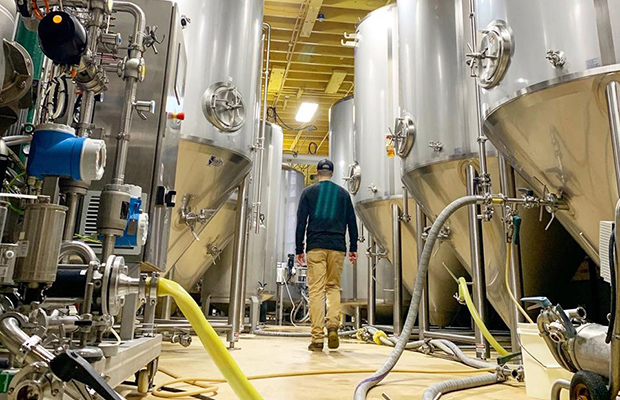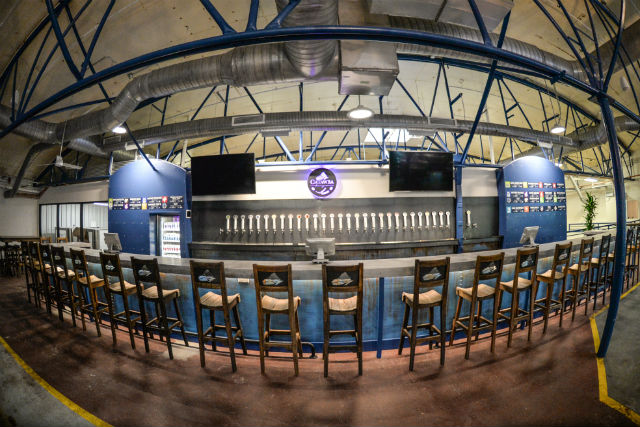
Industrial Arts Brewing chose to embrace automation out of the gate during the planning and buildout of the New York State brewery said Brewmaster Mike McManus, especially in the brewhouse.
“The benefits in consistency and labor (both from a Labor/BBL and workflow standpoint) have been hard to ignore,” he told Brewer.
On the hot side, the brewhouse has a high level of automation. McManus said that valves are pneumatically actuated with few exceptions. Temperature targets, transfers, volume control, and timing of additions are controlled via programmed recipes.
“Our brewers are frequently monitoring an HMI and shepherding wort through the process,” he said. “This allows for very tight control and observation of the parameters that make a difference between good and great beer.
“Consistency, timing, and efficiency are really important to us, as is the balance and workflow for our team. Trending and data collection allow us to review the hot side process closely with the benefit of the knowledge we gain on the cold side (such as fermentation performance, yield, and sensory).
On the cold side for Industrial Arts, automation for centrifugation has proven to have very quick ROI in terms of increased yield while at the same time, IA has seen incremental quality improvements in packaged beer stability.
“Each beer type runs through the centrifuge with a specific recipe and changes to parameters can be made easily on the fly with less operator error,” McManus said. “Centrifugation alone has represented approximately 8% more recoverable beer for us for some brands, and I believe optimization with the automation we have available accounts for another 1-2% yield increase.”
McManus added that IA’s level of automation has allowed the brewery to focus a good deal on cross-training production employees.
“Cross-training allows for rotation, and rotation allows for more flexibility as we grow and helps to provide better perspective while keeping people interested in their work,” he said.
As with anything, there are costs and benefits. For IA, more background work is needed for things like programming new recipes and optimization of the process.
When an automated system breaks down or fails, troubleshooting is often quite difficult.
“Inherently, there are more components, and most of the time these components require a specialized skill set to diagnose and repair,” McManus said.
For a time IA would begin the brew day remotely. Mash-in would be initiated on a timer. An operator could check the status of the mash-in through a remote connection to the HMI, and also verify that grist hydration was taking place via a camera.
”This saved us a good deal of labor, especially when we were lean in the early days of operation,” he said. ”But we abandoned this procedure as soon as we had staffing to cover the production and growth we were experiencing. Remote mashing worked great most of the time, but when there was a problem it was a pretty big pain in the ass and a lousy way to start the day.
”There is no substitute for a knowledgeable, engaged, and experienced team member.”
Read more about automation in the next print issue of Brewer, coming out this month.




Be the first to comment